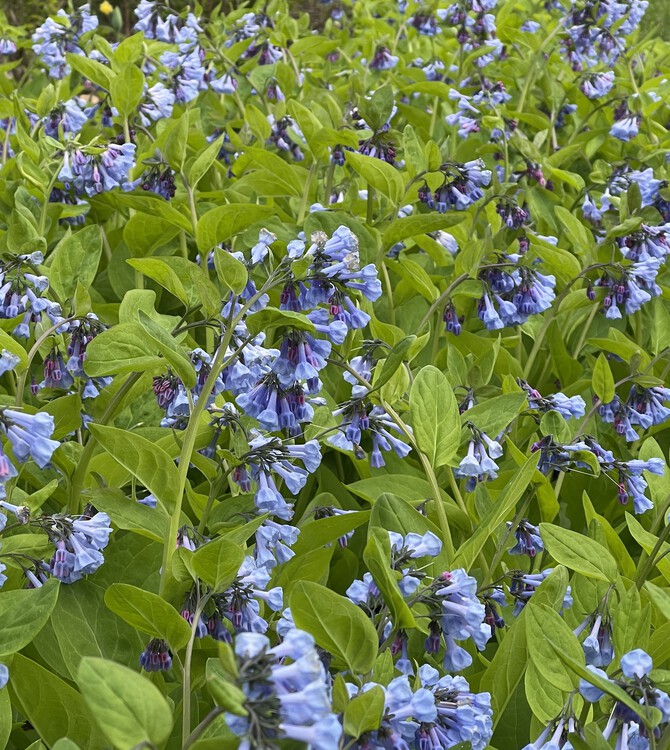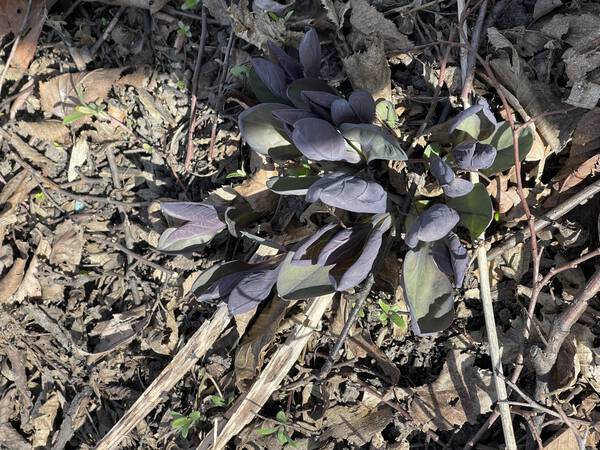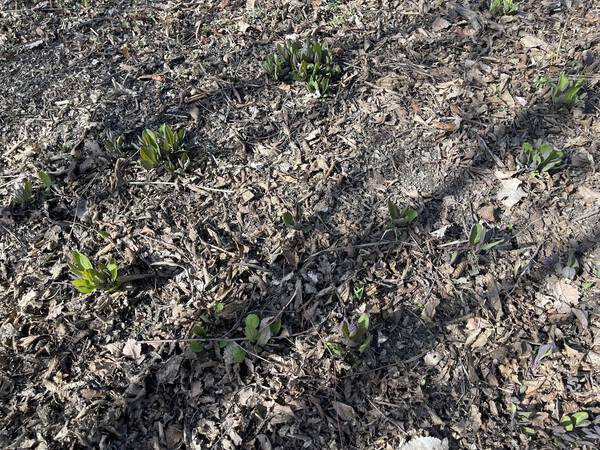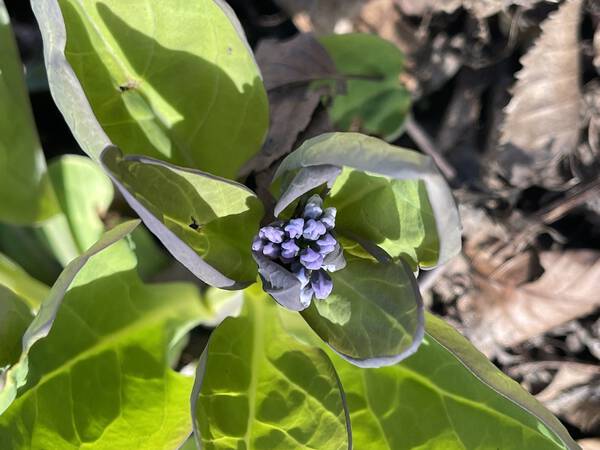More spring ephemerals
I discovered a large patch of Virginia bluebells (Mertensia virginica) in Chicago’s Washington Park during the 2020 pandemic year, when I spent a lot more time walking around, both with my son and on my own.
At their peak these flowers are unmistakable; their bell-like blooms look like they were designed by a fanciful sketch artist who was going only on the plant’s name. And their particular hue of blue is, at its best, almost neon, a brightness so distinctive that it seems unnatural. Here’s a patch from another location last year, on April 18th, that gives the idea:

The patch in Washington Park is not there yet, as of two days ago. They looked like this:
Although this spot has dozens of the flower, when I went out there two days ago to look for it, I was still surprised to see it beginning to re-emerge. Many of the leaves are reddish or purplish as they come up. This is caused by a pigment, anthocyanin, whose purpose remains incompletely understood.

Its presence in high levels often corresponds with a transitional state. Most red leaves on trees in the fall are caused by the predominance of anthocyanin. It also causes the flower buds of the Virginia bluebell, which are just becoming apparent on a few of the plants, to start out pink:
What is it about seeing a plant in its early state? You have to know what it will become to appreciate it. And yet it’s there, just as alive in its ordinariness. I think of a phase like this as a reminder of all the worthwhile things in nature that happen to be invisible. At any given time, most beautiful things have either faded away, retreated into the ground, or concealed themselves in an unremarkable form.

